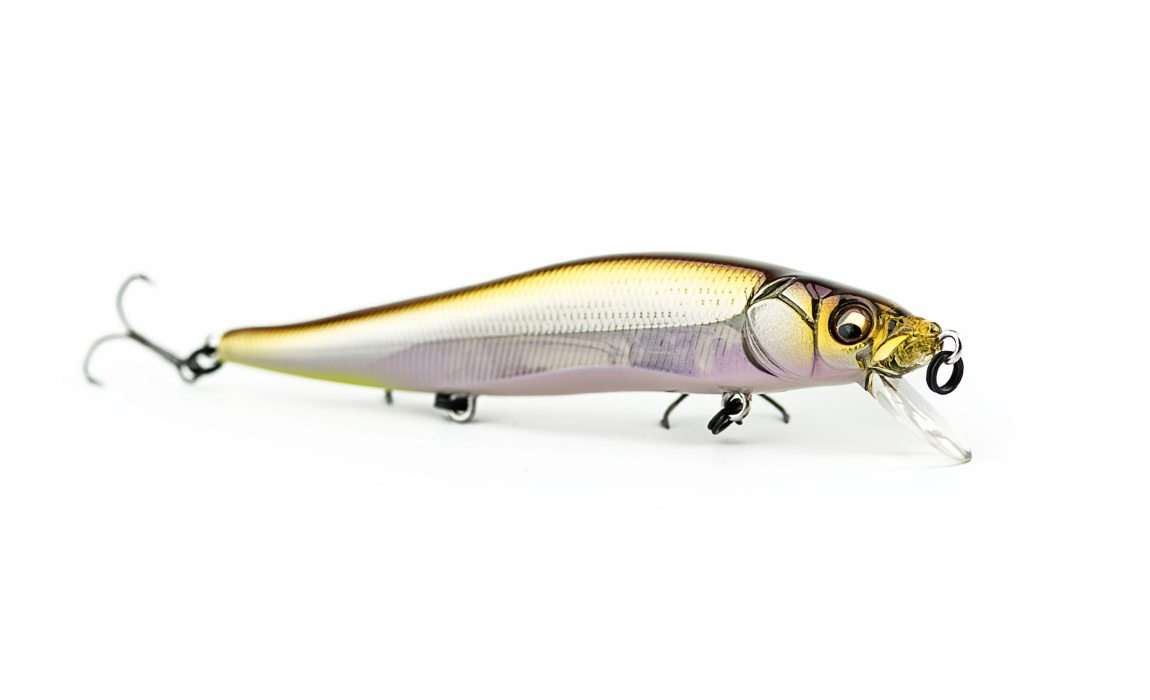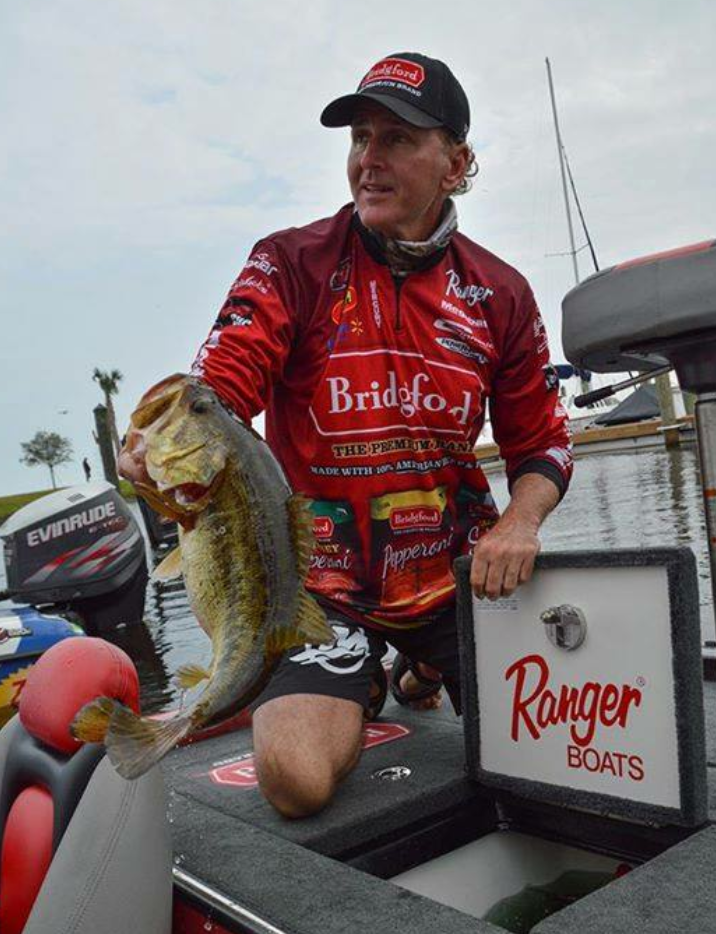
I’m pretty sure most bass anglers today have never heard of the Big Mo Bass Club from Joplin, Missouri.
But if you have ever caught a bass on a suspending jerkbait, you can thank some of the members of this club for that—it’s where the technique was born.
I joined this club as a teenager in the late 1970’s, and many of the lessons I learned here paved my way to a career in professional bass fishing.
We held our monthly meeting in a small restaurant in Joplin, and our club events were held at Table Rock and Stockton lakes for the most part.
Come late February through mid-March, several of our club anglers like Bill Watson, Rick Holmden and Mike Summers would regularly come in with 7-9 pound bass , while the rest of the club struggled.
As I became friends with these anglers, I learned their trick; they were taking a Rebel Spoonbill Minnow, which was considered a trolling lure for striped bass at the time, and weighting them with lead solder wrapped around the hook shanks to make them suspend perfectly in cold water.
At the time, Table Rock had tons of flooded cedar trees. These guys had figured out that during these winter months, they could cast the Rebel’s past a cedar tree, reel it next to it, and let it sit. Sometimes for a minute or more. Big bass on Table Rock and Stockton had never seen this before, and it was deadly.
This was the birth of modern suspended jerkbait fishing as we know it today. I’m confident to say it started on Table Rock with these Big Mo Bass Club Ozark experts of the day.
I was fascinated by this, and began working to master everything I could about the technique. From about 1978-1983, the Spoonbill Rebel was the dominant bait and a closely guarded secret in the Ozarks.
Around 1984-1990, the Smithwick Rogue began to take over.
The Rogue came in both a deep diver and a medium lip with much greater color options than the Rebel Minnow.
At this point, the word began to get out. Most of the Missouri Ozarks knew about it, but it was still relatively unheard of around the rest of the country.
From about 1990-1999, the Rogue and the Bomber Long A were the two-main suspending jerkbait choices, but at this point in the jerkbait evolution, they still floated out of the package, requiring anglers to weight them with various methods to achieve neutral buoyancy.
At this time, I had over 20 years of suspended jerkbait fishing under my belt, and had been part of the Megabass Pro Staff since 1992.
In the mid-1990’s Megabass was beginning to expand its hardbait line rapidly in the United States, thanks to Masaki Murayama, who was heading up Megabass USA at the time, and it’s Pro Staff, which included Aaron Martens, Danny Correia and myself.
I approached Masaki in 1997 with the idea of Megabass building the ultimate suspending jerkbait. For about 6 months, we worked with Yuki Ito, founder and chief lure designer for Megabass out of Hamamatsu, Japan.
I explained in detail to Yuki the art of suspended jerkbait fishing in the Ozarks, and sort of my “wish list” for the perfect suspending jerkbait. Yuki also flew from Japan to fish Table Rock with me, to see these ideas in practice.
Because of this effort and information, Yuki was able to design the Megabass Vision Oneten in the late 1990’s, creating what is arguably the most renowned jerkbait in the world today.
Megabass transformed jerkbait fishing with the Vision Oneten, delivering a bait that suspended out of the package, instead of requiring anglers to modify the bait after buying it. Initially, anglers were shocked at the nearly $30 price of the bait, after being conditioned to paying $5 or less for other jerkbaits on the market.
However, due to the Oneten’s tournament success, the bait quickly developed a cult following that remains to this day.
Other companies began copying the basic design concept of the lure, and the jerkbait market quickly rocketed to the next level in terms of quality and craftmanship. Because of this increased attention on the lure, anglers began to break the myth that jerkbait fishing was a seasonal, pre-spawn technique only. Now, jerkbaits are used to catch bass all year long.
In my opinion, jerkbait fishing is the most difficult technique to master, because it’s a lure that totally relies on the angler imparting action to the lure to generate strikes.
The variables that generate strikes are numerous. Cadence, rhythm, speed, profile, color, lure size, line size, casting distance, angles and sound are all critical factors. These can change day to day or even hour to hour. Many times, all of these variables must be correct to cause a fish to strike.
The angler must also understand the personality of the fish. Jerkbait fish are notorious for following a bait and not striking. Learning to read their personality and knowing how to adjust your approach based upon this is a key to success.
Since jerkbaits require angler action to draw strikes, your setup is critical. After years and years of experimentation, I’ve found a spinning rod is the best tool for jerkbait fishing. You can make longer casts on windy days, which gets the bait deeper and in the strike zone longer. Spinning setups also allow lghter line, which I’m convinced helps.
But most importantly, a spinning rod gives you the subtle feel that a baitcaster can’t. This “feel” is necessary for imparting subtle action on the lure when it’s in the “sweet spot”, or deepest part of the cast. This is how and where your biggest bass will come.
My jerkbait setup is a Megabass Orochi XX Dropshot rod. This rods is 6 feet, 11 inches, which I think is the perfect length for casting distance and lure manipulation. The Dropshot model has a medium action tip, and a medium/stiff backbone which I like. I match this up with a Lew’s TLP 3000 spinning reel, and 6- to 8-pound Seaguar Invizx line.
My passion and curiosity to learn more about jerkbaits continues to this day. I consider the technique a philosophy unto itself on so many levels, and the jerkbait one of the greatest bass catching lures of all time.
I still take people out on Table Rock/Stockton/Bull Shoals or Lake of the Ozarks and show them everything I know about jerkbait fishing. If you’re interested, you can reach me on my Facebook page.
Thanks for reading and best of luck to all this year!
Randy Blaukat is returning to fishing B.A.S.S. events after a 13-year hiatus. You can read about his return here.

